Reprogramming SMEs To Solve Braindrain
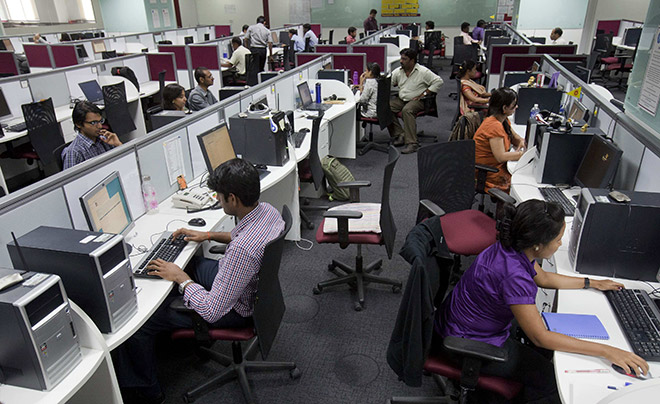
KUCHING: Joyce is a young professional with a background in biomedical science and a Master’s in Business management.
She left Malaysia six years ago to pursue her tertiary education in Australia but chose to return to Malaysia to look for work opportunities rather than remain overseas.
Thanks to her high qualifications, she quickly obtained a job at a multi-national corporation (MNC) where she worked remotely from Penang but was required to report to its Singaporean headquarters.
Initially, Joyce expected her salary to commensurate with her qualifications via attractive career opportunities.
However, her expectations were quickly dashed as she compared her salary to neighbouring OCED countries, noting that the limited new international investors offered her little room for career development.
Despite this, her diligence in her work was quickly realised as she was presented with an opportunity to transfer to her company’s Singaporean headquarters.
This left her in a conundrum as she desperately wanted to remain in Penang but the opportunity was far too attractive to pass up.
“I do have intentions on returning as I love my hometown, and if I was offered a role back home with similar benefits, remuneration and career opportunities, I would accept it in a heartbeat,” she mused to BizHive Weekly.
“However, at this juncture, I feel that it would be the better choice to remain overseas to accumulate wealth and develop my career while I still have my youth and health.” Joyce is but one such example the brain drain issue plaguing Malaysia for years.
Her story is one of many who leave, not due to a lack of patritriotism, but a lack of attractive options.
The emigration of highly skilled labour continues to be an increasingly worrying and prevalent issue facing Malaysia as more and more highly skilled Malaysians are opting to leave Malaysia for greener pastures.
Breaking down the issue
According to a research report published by the Penang Institute entitled ‘The Economic Costs and Gains of Brain Drain: the case of Malaysia and its policy relevance’, it is estimated that the total diaspora in 2013 saw a significant increase to 843,591 individuals, a 35 per cent jump from 621,526 individuals in 2000.
Breaking down these statistics further, it was reported that 64 per cent of Malaysia’s diaspora is concentrated in the top three major occupation groups which require high skills and qualifications.
Majority of our high-skilled emigrants are professions such as lawyers, accountants, and pharmacists. This is followed by the second largest group consisting of technicians and associate professionals such as nurses, trade brokers and real estate agents.
One of the major reasons as to why we are losing our highly-skilled labour is a large difference in remuneration as compared to other countries.
The report also noted that the annual net wages in Malaysia from high to low skilled employment was consistently less than half of what countries such as Singapore, United Kingdom, and Australia would offer.
Taking into account the productivity effects at a macro level, it was noted that brain drain would directly cause the wage rate of skilled workers to rise in host countries (Singapore, UK, Australia) but fall in the source country (Malaysia).
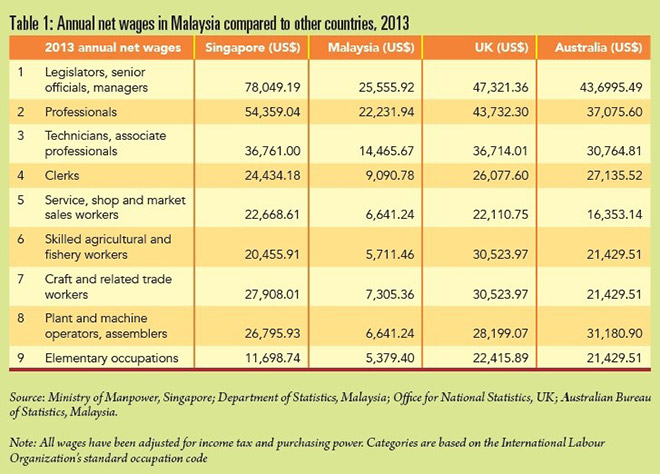
Table 1: Annual net wages in Malaysia compared to other countries, 2013 // SOURCE: Ministry of Manpower, Singapore; Department Statistics, Malaysia; Office for National Statistics, UK; Australian Bureau of Statistics, Malaysia
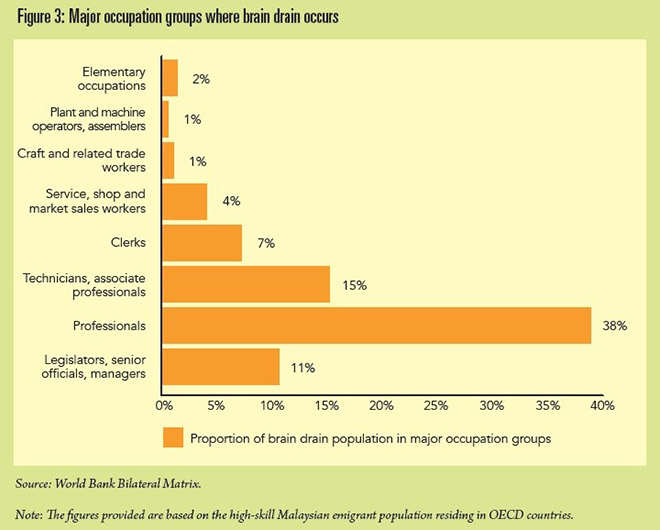
Figure 3: Major occupation groups where brain drain occurs // SOURCE: World Bank Bilateral Matrix
This would lead to increased brain drain as emigrants look for better remuneration elsewhere in other more attractive host countries which leads to a vicious cycle of low wages encouraging increased high skilled emigration.
An example of this occurring is the high number of degree holding nurses that are choosing to emigrate.
Dr. Zabidah Putit, head of Nursing Department associate professor, explained in a recent nursing conference that degree holding nurses are struggling to obtain a pay in Malaysia that commensurates their educational qualifications as degree holding nurses are still receiving similar remuneration rates as diploma holders within Malaysia.
“As a result, our nurses holding degree qualifications often opt to work outside the country such as Singapore, Brunei and even Saudi Arabia because these countries pay them according to their qualification.
“At the same time, the higher rate of exchange also plays a role in attracting them.
“More than half of our highly qualified nurses work in Singapore,” she said.
Looking back towards our remaining workforce, it seems the effects of brain drain within Malaysia have largely been negative, despite some studies demonstrating the benefits brain drain can bring about.
It was observed that brain drain in developing countries has shown an overall positive effect through a gross increase in human capital in the supplying country due to increased emphasis on education.
Unfortunately, this does not seem to be the case of Malaysia as we continue to witness a much higher outflow of high skilled labour compared to inflow.
The Penang Institute report supports this as it reported that only 5.1 per cent of foreigners had tertiary education as compared to 27.3 per cent of Malaysians.
Instead, most foreigner workers within Malaysia are considered low to mid skilled labour with a reported 46.1 per cent having only primary education as their highest education attainment level.
Additionally, with the majority of our workforce – 58.1 per cent Malaysians; 39.9 per cent foreigners – having only secondary education, it suggests that there we are far from possessing a highly skilled workforce.
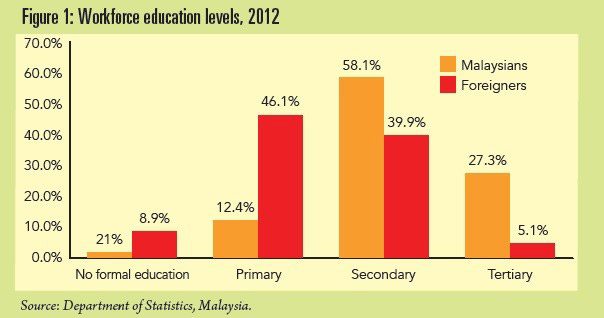
Figure 1: Workforce education levels, 2012 // SOURCE: Department of Statistics, Malaysia
Such high rates of high-skilled diaspora coupled with a low to mid skilled workforce may pose an issue for SMEs wishing to adopt new technology as there would be a lack of qualified labour that would be able to utilise said technology optimally.
However, this issue has not gone unnoticed as Datuk CM Vignaesvaran Jeyandran, chief executive of Human Resources Development Fund (HRDF) outlined the government’s parameter for Malaysia to become a high income and developed nation by Year 2020.
“One of the emphases is to increase the number of skilled workers from the current 31 per cent to 35 per cent..
“That means we need to bring more talents to participate in the workforce while retaining the existing ones,” he continued on to explain.
This is where the HRDF comes in with a holistic approach where their assistance begins from supporting dropped out students to industrial training students up to top management trainings.
“As the matter of fact, we have just celebrated a graduation of our apprentices who received their certifications in Electric Technician, Welding, Information Technology, Plastic Injection Moulding and Hospitality, just to name a few,” announced Vignaesvaran.
However, it should be acknowledged that the accessibility to such training and upskilling programmes may be low for some SMEs.
SME employers who have insufficient levy payment balances to continuously train and upgrade the skills of their employees should note that they are always welcome to reach out to HRDF for assistance.
The HRDF offers a multitude of services and schemes, including its Training Partner Scheme (SBL Scheme) which allows SMEs to apply for training programmes despite not paying levy to the HRDF.
“This scheme encourages collaboration amongst training providers that provide training to SMEs” explained Vignaesvaran.
Sirim’s multiple training programmes that deal with equipping SME employees with the necessary knowledge to deal with new technology is also claimable under HRDF’s SBL scheme.
“These training programmes will create a self-enforcing cycle as talent creates more opportunities for growth of an organisation.
Emphasis should also be placed on designing work environments that help all employees improve their business performance on a daily basis,” noted Vignaesvaran.
Retention of human resources Looking past development and into retention, the ability for SMEs to retain their high-skilled and training employee is a strategic tool towards adapting to technological advancement.
Having high-skilled talent allows SMEs to facilitate technological innovation at a higher rate while possessing an ability for early technology adoption as they would have the necessary human resources to do so.
As such, Vignaesvaran advises that that SMEs should make a concerted effort towards taking an all-rounded approach which aligns to their business strategies of innovation and adoption of technology and their talent management of upskilling and retaining their workforce.
“It is only through this approach that we can successfully bridge skill shortages by harnessing the full potential of the local workforce,” he continued.
When asked about additional HRDF initiatives and or future plans to attract, develop, and retain the Malaysian workforce, Vignaesvaran said under the 11th Malaysia Plan, the coverage of the Pembangunan Sumber Manusia Berhad Act 2001 will be expanded to include more subsectors of the services and agriculture sectors.
“This will increase the number of employees eligible for training under HRDF by 58 per cent from 1.77 million in 2014 to 2.8 million in 2020.
“As part of our mandate to continuously expand our role and build human capital, we constantly appeal to our registered members in more than 63 sub-sectors to up-skill and re-skill their employees for greater productivity and utilise their unused funds (amounting to RM1 billion), towards professional certification programmes.
“Currently, a total of 99 per cent of our members (and 52 per cent of non-members) subscribed to semi-skill training programmes, which only awards a Certificate of Attendance.
Research showed that employers tend to opt for non-technical training such as safety & healthy; quality & productivity; and motivation and team building.
“The remaining (one per cent) have nominated their employees for high-skilled, professional certification programmes,” he concluded.
Technological solutions to retain talent
With the rise of technological advancements, Malaysian small-medium enterprises (SMEs) may suddenly find themselves in the midst of a hyper-competitive global environment where the ability to be sustainable is heavily linked to their adaptability for change.
In an increasingly global environment, there will be a multitude of factors leading to change in the environment, and without the ability to adapt to change, SMEs may find themselves stagnating or struggling to keep up with their competitors.
In a key note address entitled ‘Sustaining Growth and Development in Malaysia’, Minister in the Prime Minister’s Department Datuk Seri Abdul Wahid Omar noted that SMEs make up 97 per cent of total business establishments within Malaysia.
Wahid continued to report that our SME sector is also the largest provider of employment where it provides 60 per cent of job opportunities, contributes to 32 per cent of our gross domestic product (GDP), and 19 per cent of exports.
Due to this, the need to push and improve our SME sector has been a widely debated topic as its success and survival will have a significant impact on our economy and GDP growth.
This booming segment of the economy is quickly pegged to be the solution to retain talent in Malaysia as well, as fresh graduates or long-term employees can take to SMEs to create jobs and opportunities for themselves.
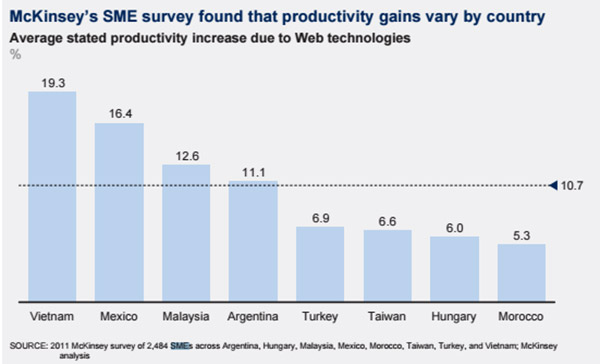
SOURCE: 2011 McKinsey survey of 2,484 SMEs across Argentina, Hungary, Malaysia, Mexico, Morocco, Taiwan, Turkey, and Vietnam; McKinsey analysis
This stands especially true for local Sarawakian SMEs who tend to look more towards competing in the global export market due to our relatively small market with a population of 2.7 million people.
“As such, we need to have a global mindset and export is the way forward to increase our production and value of our products,” encouraged Datuk Julaihi Narawai, Assistant Minister for Industrial Development (Investment and Promotion) during a separate press conference.
This leads us to the main question: How do we keep up with technological advancements?
Eye on tech innovation, adoption
One way of doing so is by focussing on integrating technological innovation and adoption within SMEs.
This may prove highly effective as a means for SMEs in staying sustainable and competitive as the ever increasing rates of technological advancements, has created such volatility within some industry environments that it is now widely acknowledge that technology adoption is no longer a choice for most SMEs.
“Entrepreneurs, industries and SMEs need to embrace technology and innovation to grow, sustain and make their business profitable,” Julaihi concurred.
However, in this process of technology adoption, another factor we must also consider is whether our human resources are being optimally utilised.
HRDF’s Vignaesvaran told BizHive Weekly that local talents must be equipped with the right knowledge and training to utilise the technology advancements.
Vignaesvaran continued on to suggest that by upskilling our talents through high-skilled training programmes, especially ones that train them to utilise advance technology, they will be able to contribute to the company’s growth while having the opportunity to enhance their own career development.
Additionally, he cited that a study conducted by Frost and Sullivan on the ‘Effectiveness of Training Incentive Schemes’ reported that employees exposed to upskilling were observed to be generally more motivated and productive compared to those who were not.
“By harnessing the full potential of the Malaysian labour force, we can benefit from increasing growth in labour productivity which is expected to grow at 3.7 per cent per annum “Therefore, companies must realise that by Year 2020, the existing industries will be encouraged to move up the value chain by investing in high value added activities that will require high skilled workers.,” affirmed Vignaevran.
Overview of adoption within SMEs
Data from a 2012 Google-McKinsey report noted that a whopping 55 per cent of Malaysians reported not knowing how to use the internet, while another 40 per cent stated that they do not need the internet.
When many of us may find it hard to survive a day without our smartphones, such results seem completely inconceivable.
Yet, the report continues on to reveal data that infers that only 20 per cent of Malaysian SMEs use IT on a regular basis in their daily operations; only 69 per cent of their employees access the internet; only 14 per cent of SMEs have an online presence; and that our SMEs only use 14 per cent of their revenue to invest in technology.
Looking towards the benefits of technology adoption, the report indicated that adoption of web technology alone proved to be a significant catalyst for increased productivity in Malaysian SMEs at a 12.6 per cent increase. These statistics indicates a clear lag of technology despite obvious benefits within our SME sector.
“The utilisation of new technology is still relatively low and this is attributed to the fact that some of our SMEs lack the access to funds and working capital.
“In addition, they don’t have funds to send their employees for training.
“Other than that, due to cost, most companies do not place emphasis on research and development (R&D),” shared Vignaesvaran.
As such, it is blatantly obvious that a solution to this gap in technology would be to increase SME accessibility to new technology while simultaneously providing education on the importance and benefits of technology adoption and integration.
Of course, steps have already been taken in this direction as witnessed by government supported initiatives such as Sirim Bhd’s (Sirim) technology audit.
Sirim’s technology audit is one of the initiatives introduced under the SMEs technology penetration and upgrading programme under Sirim’s industrial innovation model (SIIM) where local SMEs may choose to participate to receive a personalised report regarding their strengths and weaknesses, challenges in the business environment, and most importantly, potential areas for improvement in managing technology.
Furthermore, SMEs that have undergone this audit may also be eligible for soft loans of up to RM5 million for technology implementation or upgrades within their operations. These loans would be funded by the RM200 million budget allocated to the SME bank from 2016’s budget.
“Our technology audit is not a compliance audit, it is an avenue for us to understand the issues facing SMEs through an assessment of how they are utilising and managing technology, and how technology is benefiting them.We are being proactive with this programme to help SMEs look into various aspects of its technology utilisation and productivity enhancement,” explained Ir Susana Kamaruddin, principal engineer of Sirim Industrial Research’s Plant and Machinery flagship.
“When productivity enhances, these companies can reduce their costs and be able to compete not only locally but also abroad,” opined Datuk Seri Mustapa Mohamed, minister of the International trade and Industry Ministry (MITI), during a press conference at a recent seminar on Best Practices of Strategic Partnerships to Drive Innovation and Productivity.
Kamaruddin also added besides providing key information and advice, the audit can also help SMEs gauge whether they have the sufficient resources to embark on new technology through the technology audit’s R&D readiness assessment.
However, for SMEs that are keen on integrating new technology despite not having sufficient resources, Kamaruddin noted that Sirim would be able to help through assistance in setting up collaborations with institutes that are currently utilising this new technology or Universities that are currently conducting relevant research.
Further issues regarding adaptation The current skill ratio of our workforce leaves little to be desired as the decrease in human capital has directly contributed towards our lag in technology adoption and a higher dependence on foreign expertise as we do not possess the human resources for technological innovation, or proper technology adoption and integration.
Additionally, Kamaruddin opines that our decrease in human capital has also contributed to a reluctant of technology adoption within SMEs as the short term cost effectiveness of low skilled labour may seem much more attractive to SMEs compared to high initial investment for technology innovation and adoption.
“In Malaysia it’s a bit hard because the supply of unskilled workers is still available.
So for SMEs to embrace introduce technology, companies would have to have a vision for them of sustaining for a longer period by adopting technology rather than continuously bringing in unskilled workers to compete.
“One of the ways we encourage this is by reminding them that technology is now a necessity to compete in the current environment,” added Kamaruddin.
As such, we should address not only our dwindling talent pool but also SME perceptions on the benefits of technology adoption.
Furthermore, a journal article published by the Journal of Management and Sustainability, entitled ‘Exploring common technology adoption enablers among Malaysian SMEs”, noted that the characteristics of owner-managers are also a significant predictor in SMEs’ technology adoption in Malaysia.
Some of these key characteristics identified were the owner-manager’s academic qualification, and technology know how.
This suggests that the rate of technology adoption within Malaysian SMEs’ would likely be higher if there is a higher rate of tertiary educated and highly skilled owner-managers.
As such, our decreasing talent pool would be a contributing factor to a low rate of technology adoption as there be a lower rate of tertiary educated and highly skilled owner-managers within SMEs.
Another interesting finding of this study is that when technology alone is not enough for enhancing effectiveness and efficiency of a company, it would require support from other resources such as talented staff with certain levels of competencies to benefit the investment in the technologies chosen.
This is indicative and supportive that in order for us to reprogram our SMEs to be more sustainable and competitive in their new volatile environments, we cannot solely focus on technology innovation and adoption while neglecting the management of our human resources as they will be instrumental in achieving our business goals.
Vignaesvaran of HRDF was supportive of this view as he noted that talents should be every SMEs greatest asset and critical enabler for driving and sustaining a company’s productivity and growth.
As such, our SMEs are encouraged to place in robust processes and systems, which will not only harness the potential of inherent talents, but also build on the current human resources through attraction of new talents.
“Strategic planning, alignment of business strategies with talent acquisition and retention strategies, balancing current needs and future demands are all important in regards to human resources,” he said.
What else can be done to attract, develop, and retain talent? As the importance of human resource management (HRM) has been established, one key function of HRM is succession and workforce planning.
SMEs need to bear in mind workforce forecasts in order to be able to effectively attract, develop and retain talent they will require for expected operations.
In a press release by Talent Corporation, it was noted that one key forecast was an increase of women in the workforce, as female labour participation rate (FLPR) witnessed a 7.5 per cent increase between 2010 and 2015.
While this is just under the government set target of 55 per cent, this increase still resulted in an additional 750,000 women entering the workforce.
This indicates Malaysian workforce demographics are shifting to be more inclusive of women and as such, SMEs should also be wary of this in order to effective recruit, develop and retain their human resources.
The importance of this is further highlighted as the press release continued on to point out: “Based on annual returns compiled by Bursa Malaysia across all public-listed companies (PLCs) in 2015, women held 26.3 percent of top management positions across PLCs.
However, this percentage increased to 28.4 percent for women in top management positions in the top 100 PLCs (representing a market capitalisation of 82 percent).
“This marks a substantial improvement from a diversity survey of listed companies conducted by TalentCorp and PwC in 2013 which found that women held 24 percent of top management positions.
Furthermore, studies have also shown that there is a positive correlation between increased workforce diversity and the rate of innovation within organisations.
In order to increase their workforce gender diversity, SMEs should look into the characteristics of female labour.
One characteristic of female labour is a higher need for flexible work arrangement (FWA) due to increased family obligations as compared to male labour.
“While Corporate Malaysia has adopted flexible work arrangements as a strategy to attract and retain more women in the workforce, more can still be done as less than 30 percent of companies in Malaysia offer flexible work arrangements,” said Shareen Shariza Dato’ Abdul Ghani, chief executive officer of TalentCorp.
“It’s different now, it’s not that the people adapting to company, but how an organisations needs to adapt to different types of talents and different kinds of ways talents work.
“If we dont have flexible work arrangements (FWA), people with great talent may not want to be part of an organisation because it doesn’t respond to their ways of working.” She concluded.
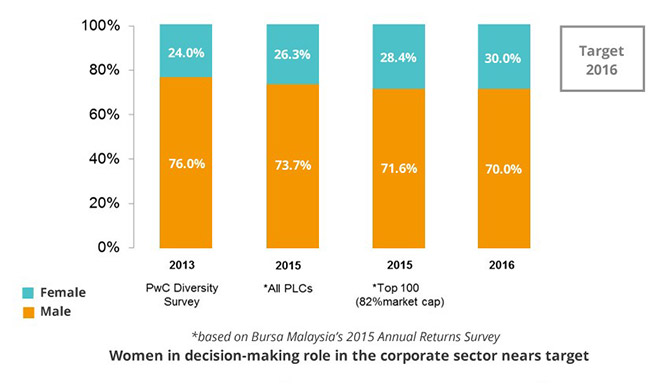
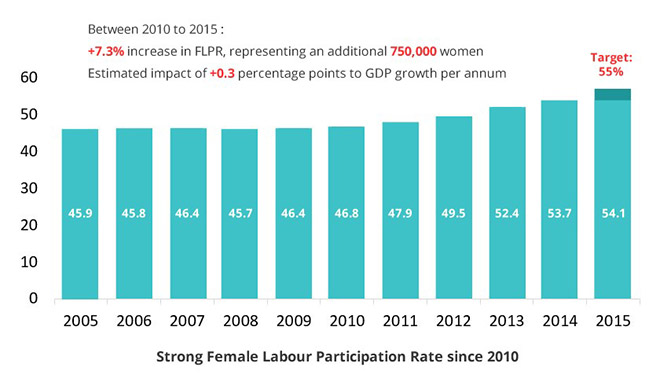
News from Borneo Post Online


